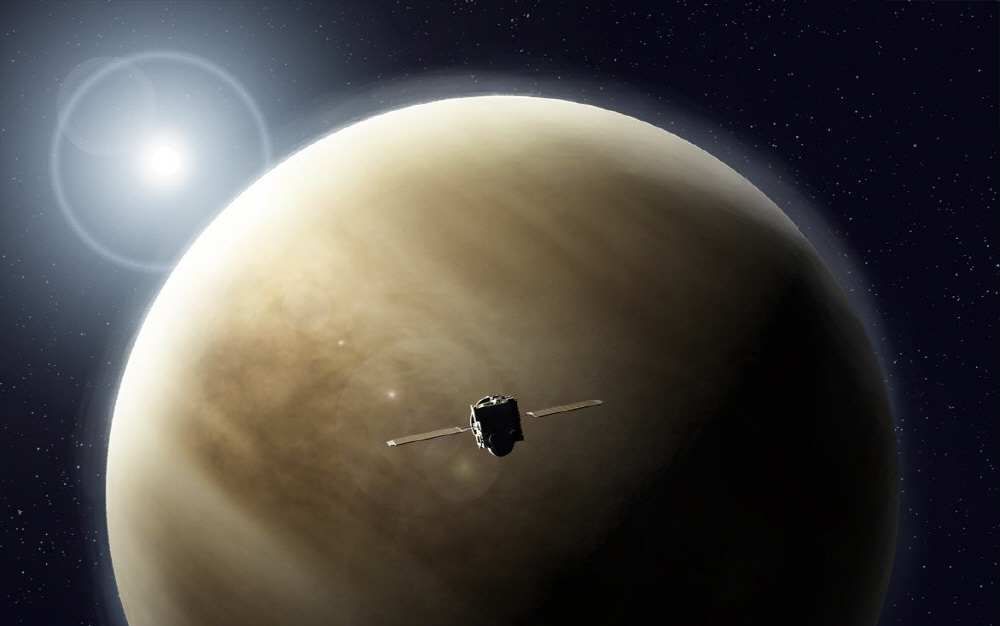
Venus is the second closest planet to the Sun in the solar system, and it is also a planet that orbits closest to Earth. Although it is the closest star to Earth, it has been far behind Mars in terms of investigation, but in recent years, attention has been raised on Venus as the planet most similar to Earth. Because of this, it is also pointed out that the era of probes will come.
Venus is a terrestrial planet. It is sometimes referred to as Earth’s twin because it is the most similar in size or average density to Earth in the solar system. However, due to the carbon dioxide greenhouse effect, Venus’ surface temperature reaches close to 500 degrees, so if an astronaut wants to land, it is far less noticeable than Mars in terms of reality.
However, recently, space research institutes around the world are paying attention to Venus. It is planning to launch the Venus probe one after another. The Indian Space Research Organization ISRO plans to launch a Venus orbiter in 2023 and NASA plans to launch a probe in 2025. In addition, ESA and Russian space development company Los Cosmos are also planning to explore Venus from the late 2020s to the early 2030s.
The reason for this surge in interest in Venus is that the exploration of Venus can be seen as an understanding of the conditions necessary for the birth of life. Venus is similar to Earth and, although it may have existed in the past, it is now a poor environment for life. It is possible to analyze the causes of the decisive division of Venus and Earth’s environment to assess whether life exists on an alien planet. One expert on the new environment surrounding Venus says it may be a new decade for Venus.
Venus exploration flourished during the 1960s and 1980s, when competition for space development was fierce during the Cold War, but numerous probes could not withstand Venus’ harsh environment for a long time. The longest active probe that landed on the surface of Venus was the Venera 13, launched by the Soviet Union in 1981. The record is 127 minutes.
In the meantime, ISRO announced a plan for a Venus rover that uses radar to map the surface through Venus’ atmosphere. Of course, the possibility of a proof-of-concept exploration is pointed out by focusing on the engineering side rather than the scientific side. However, since even the basic information of Venus is not well understood, any exploration will be an important step to enhance understanding of Venus.

The first to reveal the surface of Venus was Magellan, the probe launched by NASA in 1989. In the next 30 years, no new research has been conducted on Venus’ indicators. With these little clues, researchers estimate that Venus’s surface may have a plate moving. If it turns out that the plate is moving because the carbon dioxide concentration in the atmosphere and the ground is maintained properly and the temperature is kept constant, Venus could be a better environment for life than it is now.
It is also paying attention to the types of rocks that cover the surface of Venus. Basalt or granite is a rock that hardens as the magma cools, but unlike basalt, granite cannot be made without water. Therefore, the researchers expect that if there is granite on the surface of Venus, it will be evidence that there was water on Venus.
To enable long-term exploration on the surface of Venus, the NASA Glenn Space Center has developed a device that will stay on the surface of Venus for at least 60 days. A simple electronic device using silicon carbide that can be mounted on the Venus probe has been developed, which the research team says will be a game changer for the Venus exploration.
The research team has already developed a static surface survey called LLISSE (Long-Lived In-Situ Solar System Explorer) using this durable electronic device. It’s about the size of a toaster.
Although the LLISSE is small, it can measure temperature, air pressure, wind speed, wind direction, amount of light, and chemicals in the atmosphere. The research team points out that the current Venera exploration situation is very delayed, given that Venera 13, which has stayed on Venus for the longest time, has a lifetime of 127 minutes.
Already, Russia’s Roscosmos research team has shown interest in LLISSE and is participating in the Venera-Dolgozhivuschaya (Venera-D) project in cooperation with NASA to investigate the surface of Venus for a long time. As many research institutes as well as the United States and Russia are interested in Venus, Venus may be visited by numerous probes in the coming decades. Related information can be found here .


















Add comment